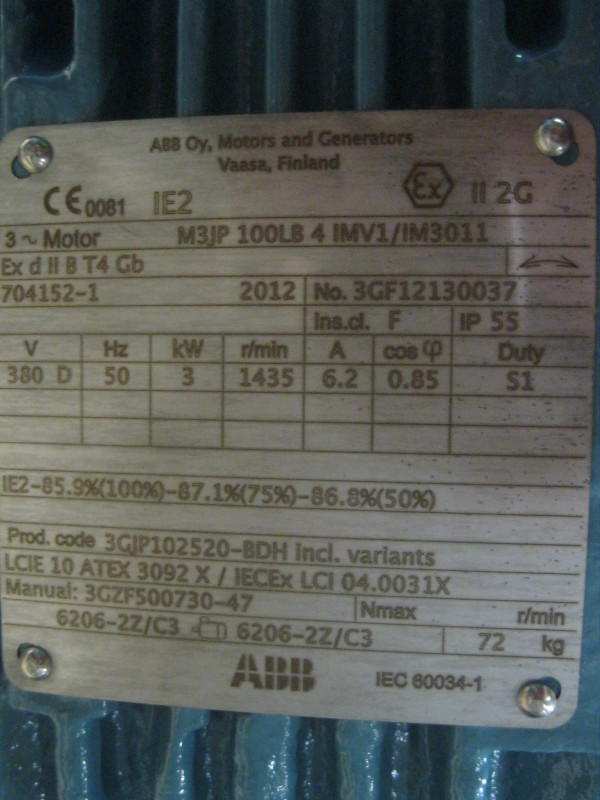Hopefully this will be a simple one for you electrical guys:
I have a 4-pole 3.0kW motor, 380V/3-ph/50Hz, whose data sheet shows D (delta) connection and starting current of 40 Amps. The Customer reports that when they started the motor, it pulled 70 Amps which consequently caused the motor trip out on over-current.
I noticed that 70 divided by 40 is 1.75, which looks close to 1.732 (square root of 3). Then I looked at the catalog for the motor and found that the rated current for this motor in 400V Delta connection is a factor of approx. 1.73 higher than the same motor in 690V Wye connection. Also, 690 divided by 400 is 1.73.
I'm not drawing any conclusions, just providing some observations. Can anyone explain what could be causing our motor to draw approx. 1.75x its rated starting current at start-up?
I have a 4-pole 3.0kW motor, 380V/3-ph/50Hz, whose data sheet shows D (delta) connection and starting current of 40 Amps. The Customer reports that when they started the motor, it pulled 70 Amps which consequently caused the motor trip out on over-current.
I noticed that 70 divided by 40 is 1.75, which looks close to 1.732 (square root of 3). Then I looked at the catalog for the motor and found that the rated current for this motor in 400V Delta connection is a factor of approx. 1.73 higher than the same motor in 690V Wye connection. Also, 690 divided by 400 is 1.73.
I'm not drawing any conclusions, just providing some observations. Can anyone explain what could be causing our motor to draw approx. 1.75x its rated starting current at start-up?

